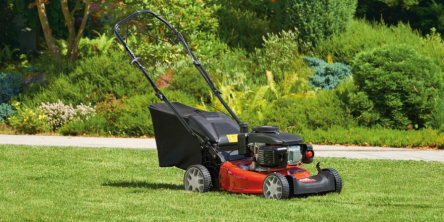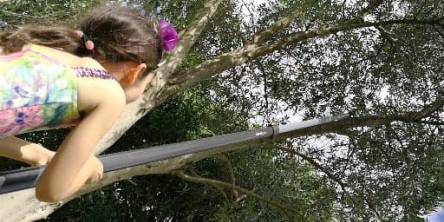Autumn Pests and How to Deal with Them
The fall season means that millions of New Englanders will be lining up around the block for pumpkin spice lattes, Patriots' tickets, and amazing Black Friday deals.
Kids are getting settled into the school routine and you're probably busy setting up your home for Thanksgiving...yet a few unplanned visitors might also be planning to plop down their luggage as well.
Rodents, beg bugs, spiders and really nasty pests like cockroaches are all looking for a warm place to call home this autumn season. Raccoons, squirrels and possums are also searching for a way to beat the cold for the challenging winter season that lies ahead.
Carpenter ants, unlike termites, don't actually eat wood but they can still cause a lot of home damage in the fall, so any steps you can take to stay protected are definitely in your best interest. Weatherproofing your home and checking your siding for vulnerabilities really go a long way.
Autumn Pests and How to Keep Them Out!
Whether you're talking about ants, raccoons, birds or rodents...pests are pests and you'd rather not have to deal with them.
Pests are just a general nuisance—hence the name—but they can also chew through your wiring, leave behind nasty odors, and build nests in your basement and crawl spaces to make room for the next generation of home invaders.
If you don't deal with pests early enough in the autumn season, then you might have another problem come winter. Pests usually come into your home looking for food, shelter and warmth. But pests also bring with them ticks, mites and maybe even lice.
Blocking pests from entering in the first place can prevent pests from bringing in other pest home invaders and keep your family safe.
While bees, flies and wasps are declining in number in the northern hemisphere this time of year, other household pests like mice and birds are just getting started.
Tips for Taking Out Winter Clothes and Linen
Moths, bed bugs and even stink bugs can make a surprise appearance as you take your winter clothes out of storage from the garage, basement or back of the closet.
It's amazing how resourceful some of these pests can be. Stink bugs can spend weeks lounging about in your garage or among your clothing before opportunistically making their way into your home; bed bugs are also an equal-opportunity home invader since they slip in through kids' schoolbags, articles of clothing or suitcases from a recent trip.
Flypaper, moth killer strips and even the smell of cedar can effectively eliminate or repel moths from calling your closet storage space home.
Regularly vacuuming your closet and thoroughly inspecting new clothes and furniture for bed bugs is another way to stay safe for the holidays. High temperature washing-and-drying can also neutralize bed bugs.
Check Your Roof and Chimney
Checking your roof before winter gets underway makes sense for two reasons—looking for missing tiles or areas in need of roofing cement is much easier to do when snow isn't drizzled all around and, second, if you wait until winter it might already be too late.
That's because rodents such as rats and mice are completely opportunistic and won't miss a chance to sneak in through your roof, especially around a vulnerable soffit panel or exposed vents. Birds and squirrels really like to make their entrance via chimneys as well.
You obviously want to replace any missing or deteriorating tiles right away, and consider storing attic items in plastic containers in lieu of cardboard boxes. Plastic is far sturdier and allows rodents less of a chance to create nests, if pests do make it into your attic.
Weatherproof, Caulk and Proper Food Storage
Rodents like mice and rats—common New England home invaders this fall—can harbor all kinds of diseases and bacteria, and they might even take to chewing your wires and causing real problems.
Weatherproofing, caulking and applying bristle strips under doors can reduce your home's vulnerability to pests. Storing food in airtight containers can also help ensure that rodents get less of a foothold in your kitchen this holiday season.
Actually, weatherproofing your home and sealing gaps will help you save on your heating expenses during the frigid winter season ahead and doing so will also help cut down on vulnerabilities that pests might just take advantage of.
If you know you have a pest problem in your home, call a nearby pest control company right away.
Similar Articles
In its natural habitat, Asia, the astragalus plant thrives. Huang qi (yellow leader), as it’s known in China, is regarded as one of the most significant plants in Chinese traditional medicine.
Raised beds need money and forethought. To avoid additional expenses and frustrations, you want to get things right the first time. If you're planning to build a raised bed garden or are just thinking about it, there are a few things to think about before you get started.
In the past, a lawn was mowed by hand. That was very tedious and also took a lot of time. Many gardeners and garden owners today indulge in luxury and buy a lawnmower.
A lawnmower is an extremely important piece of equipment for maintaining a garden. Find out which lawn mower is best for your yard and make maintaining your lawn a fun and exciting activity.
With succulents as indoor plants, you subject your long-serving feeling of living to a refreshing change. Some score points with silhouettes similar to stone sculpture, others impress with a magnificent flower that rises above their prickly dress.
Dandelions are broadleaf perennials that you can get rid of only by using the best dandelion killer. But what type of herbicide? Let’s find out. Eliminating weeds such as dandelions is a very tough job. Because you have to make it a point to remove the root of the plant itself.
Trees are an essential part of any property, whether it’s a residential or commercial one. When properly cared for and maintained regularly, trees add much value to any place. Some of the long-term benefits provided by trees include enhancing the aesthetic appeal of a home, increasing the worth of a real estate asset, providing shade in summer, and more.
Tree trimming can cost anywhere from $50-$1500. The reason for such a large range is the huge difference in the sizes of trees and the amount of work that needs doing.
A pole chainsaw is a useful tool for cutting tree branches, especially the higher ones. However, many people aren't using the proper technique. This could lead to accidents and injuries. The following list contains directions for cutting branches with a pole chainsaw.


de9a.png)






